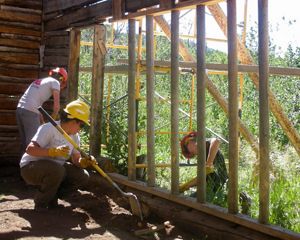Why You Should Visit
More than 80 percent of Colorado’s wildlife depends on rivers and riverside habitat. The San Miguel, one of the few remaining naturally functioning rivers in the West, supports some of the best riparian (streamside) habitat in the Upper Colorado Basin.
Natural flood cycles and a history of very little development have kept many parts of this river in pristine condition—much as they would have appeared before the state was settled.
A 7-mile stretch of the San Miguel meanders through the preserve, occupying a broad floodplain. Unlike areas upstream, the waters flowing through this site are tame and peaceful.
What You’ll See: Plants
Healthy examples of the rare Rio Grande cottonwood/coyote willow and Rio Grande cottonwood/skunkbrush sumac riparian plant community line the shores of the San Miguel River.
What You’ll See: Animals
Among the notable wildlife you may see are bald eagles (only in winter), beavers, black bears, great blue herons, mountain lions, peregrine falcons and river otters.
What to Expect
The preserve is open year-round, dawn to dusk. To make the most of your trip, consider visiting the two other Nature Conservancy preserves upstream: San Miguel Canyon and South Fork.
Catch-and-release fishing is allowed, but only with artificial flies and lures. There is a short walking trail so that you can explore the area and do some wildlife watching. There is also a visitor area with an information kiosk, an outhouse and some picnic tables.
Consider bringing a raft, canoe or kayak to see the preserve from a different vantage point. There are no put-ins or take-outs on the preserve, but they can be found upstream and downstream.
Spring and fall are the best times to visit. The summer months can be very hot and often buggy. If you visit during this time of year, bring bug repellent and plenty of sunscreen.
Use of other power-driven mobility devices (OPDMDs) may only operate on the existing roads and pullouts. OPDMDs must not be operated in dangerous or reckless manner. A person may be asked to leave the site if the OPDMD is being operated in an unsafe or disruptive manner. OPDMDs must yield to pedestrians.



